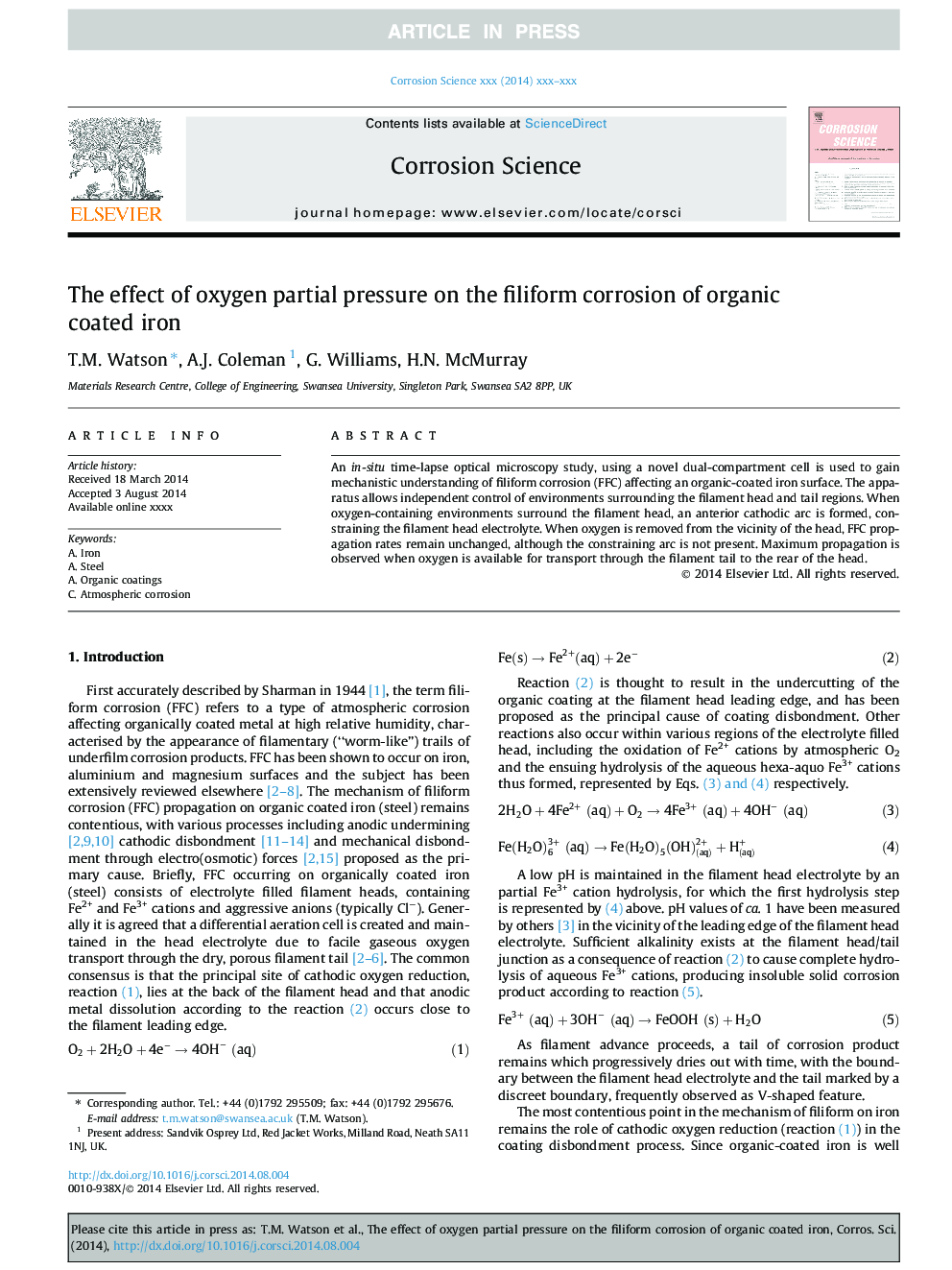| Article ID | Journal | Published Year | Pages | File Type |
|---|---|---|---|---|
| 7895478 | Corrosion Science | 2014 | 13 Pages |
Abstract
An in-situ time-lapse optical microscopy study, using a novel dual-compartment cell is used to gain mechanistic understanding of filiform corrosion (FFC) affecting an organic-coated iron surface. The apparatus allows independent control of environments surrounding the filament head and tail regions. When oxygen-containing environments surround the filament head, an anterior cathodic arc is formed, constraining the filament head electrolyte. When oxygen is removed from the vicinity of the head, FFC propagation rates remain unchanged, although the constraining arc is not present. Maximum propagation is observed when oxygen is available for transport through the filament tail to the rear of the head.
Related Topics
Physical Sciences and Engineering
Materials Science
Ceramics and Composites
Authors
T.M. Watson, A.J. Coleman, G. Williams, H.N. McMurray,
